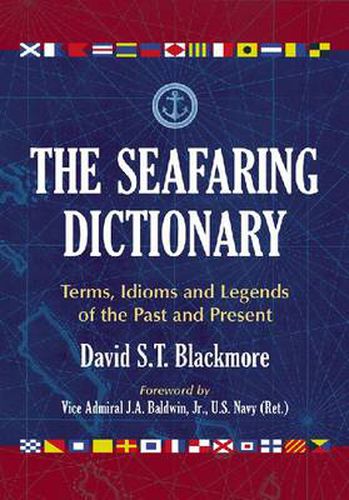Readings Newsletter
Become a Readings Member to make your shopping experience even easier.
Sign in or sign up for free!
You’re not far away from qualifying for FREE standard shipping within Australia
You’ve qualified for FREE standard shipping within Australia
The cart is loading…






This title is printed to order. This book may have been self-published. If so, we cannot guarantee the quality of the content. In the main most books will have gone through the editing process however some may not. We therefore suggest that you be aware of this before ordering this book. If in doubt check either the author or publisher’s details as we are unable to accept any returns unless they are faulty. Please contact us if you have any questions.
Navigable waters cover almost three-quarters of the surface of our planet, and they have been home to centuries of seafarers who, being isolated from land for extensive periods, developed a specialized language all their own. Their language is a complex mixture of the strange and the familiar, including words taken from many English dialects, coined words, slang words, words used by mariners speaking other tongues, and words developed to identify occupations, titles, equipment, or activities. With its many intricate nuances, ‘navalese’ can be as esoteric and incomprehensible to the layperson as ancient Egyptian hieroglyphs - but such a specialized language is vitally important to a profession in which complex technical concepts need to be communicated briefly and accurately from seaman to seaman. This book is an alphabetical compendium of more than 9000 nautical terms taken from numerous dictionaries, glossaries and other sources of nautical terminology, including volumes on nautical customs and traditions, ghost ships, paranormal maritime events, sea serpents, and marine monsters. Many of the entries are brief and factual, but when appropriate the author has inserted anecdotal material of colorful or intrinsic interest. The volume should be a helpful reference for researchers and laymen who want to understand nautical speech and customs, but it should also be of use for professional seafarers who cannot always be familiar with the complex vocabularies of today’s specialized maritime occupations, let alone those of bygone ages. There is an appendix that discusses real and speculative sea monsters, while 17 tables cover wind and wave measurement, date and time notation, phonetic alphabets, maritime signals, navigation rules, military and naval ranks and ratings, and the process of boxing the compass.
$9.00 standard shipping within Australia
FREE standard shipping within Australia for orders over $100.00
Express & International shipping calculated at checkout
This title is printed to order. This book may have been self-published. If so, we cannot guarantee the quality of the content. In the main most books will have gone through the editing process however some may not. We therefore suggest that you be aware of this before ordering this book. If in doubt check either the author or publisher’s details as we are unable to accept any returns unless they are faulty. Please contact us if you have any questions.
Navigable waters cover almost three-quarters of the surface of our planet, and they have been home to centuries of seafarers who, being isolated from land for extensive periods, developed a specialized language all their own. Their language is a complex mixture of the strange and the familiar, including words taken from many English dialects, coined words, slang words, words used by mariners speaking other tongues, and words developed to identify occupations, titles, equipment, or activities. With its many intricate nuances, ‘navalese’ can be as esoteric and incomprehensible to the layperson as ancient Egyptian hieroglyphs - but such a specialized language is vitally important to a profession in which complex technical concepts need to be communicated briefly and accurately from seaman to seaman. This book is an alphabetical compendium of more than 9000 nautical terms taken from numerous dictionaries, glossaries and other sources of nautical terminology, including volumes on nautical customs and traditions, ghost ships, paranormal maritime events, sea serpents, and marine monsters. Many of the entries are brief and factual, but when appropriate the author has inserted anecdotal material of colorful or intrinsic interest. The volume should be a helpful reference for researchers and laymen who want to understand nautical speech and customs, but it should also be of use for professional seafarers who cannot always be familiar with the complex vocabularies of today’s specialized maritime occupations, let alone those of bygone ages. There is an appendix that discusses real and speculative sea monsters, while 17 tables cover wind and wave measurement, date and time notation, phonetic alphabets, maritime signals, navigation rules, military and naval ranks and ratings, and the process of boxing the compass.